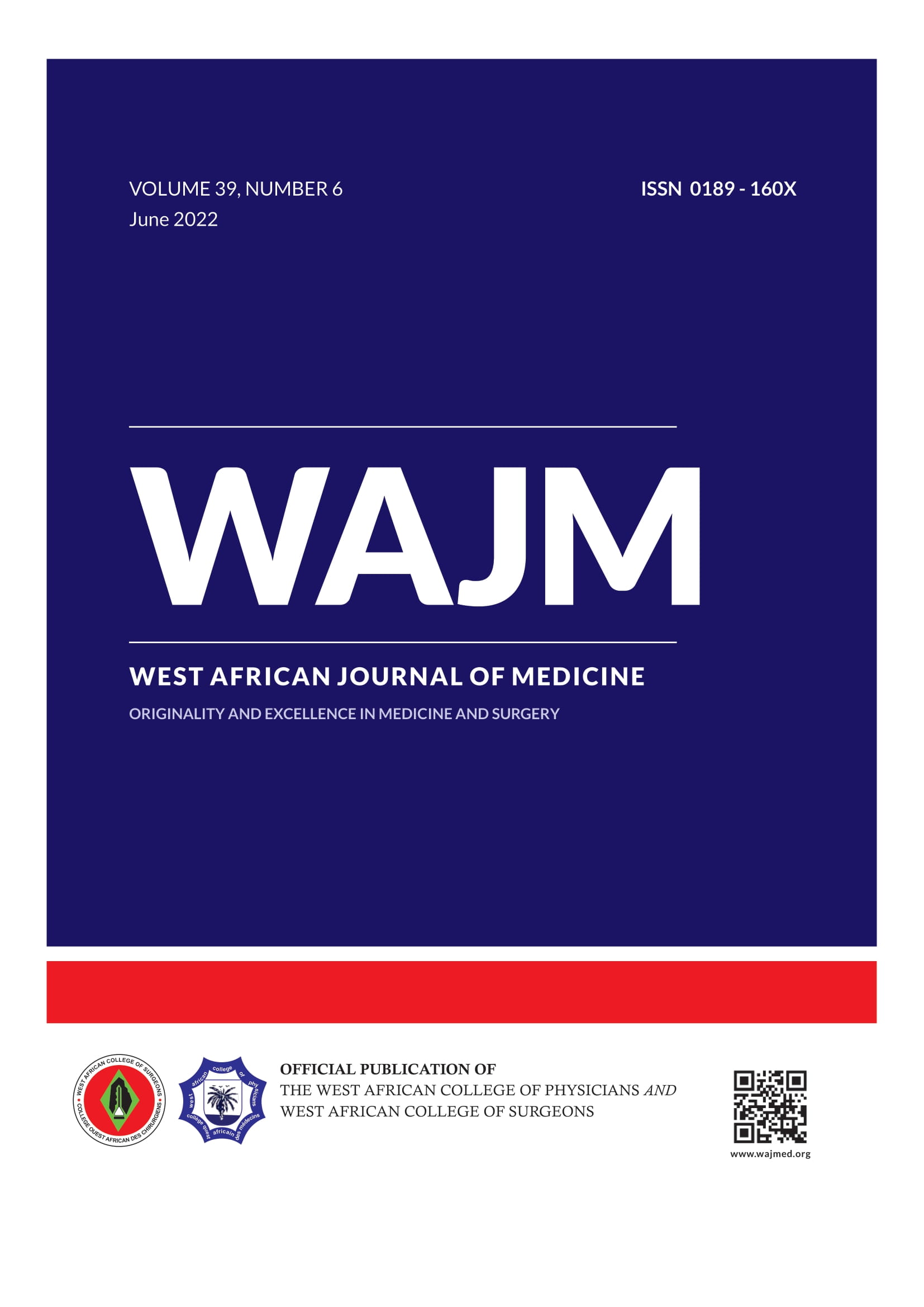ORIGINAL: The Prevalence and Outcome of Teenage Pregnancies in a Secondary Health Facility in Delta State, Nigeria: A Four-Year Retrospective Review
West Afr J Med . 2022 Jun 24;39:609-613.
Keywords:
Obstetric outcome; Prevalence; Teenage pregnancy.Abstract
Introduction: This study determined the prevalence, obstetric characteristics and pregnancy outcomes in teenagers who delivered at a secondary health facility in a Southern State in Nigeria.
Materials and methods: A retrospective study was employed to review pregnancies that were managed in Central Hospital Warri, Delta State, Nigeria between 2014-2017. Patients' notes were retrieved and analyzed with respect to the socio-demographic characteristics, pregnancy, labor and delivery complications and fetal outcome. Chi-square test was used to test the association between the independent variables and the main outcomes of the study with statistical significance set at p<0.05.
Results: Out of the 14,067 pregnancies reviewed, the prevalence of teenage pregnancy was 2.8%. The mean age of the teenagers was 17.5 (±1.4) years, 243 (61.5%) of them had completed secondary school. Majority 286 (72.4%) delivered via spontaneous vaginal delivery, while 73 (18.5%) and 36 (9.1%) delivered via caesarean section and instrumental delivery respectively. The commonest complications encountered among the pregnant teenagers were perineal laceration (23.3%), iron deficiency anemia (17%) and delivery of low birth weight infant (14.9%). The younger teenagers were twice at risk of iron deficiency anaemia {OR (95%CI); p = 2.60 (1.08-5.92); p=0.028}. A similar association was seen between the age of the teenagers and route of delivery {OR (95%CI); p = 3.11 (1.34-6.93); p=0.002}, delivery of low birth weight infant {OR (95%CI); p = 3.12 (1.28-7.15); p=0.003} and perineal laceration {OR (95%CI); p = 2.54 (1.13-5.55); p=0.010}.
Conclusion: Teenage pregnancy is associated with high risk of complications, especially among younger teenagers. Increasing public awareness as well as improving educational, socio- economic and reproductive health opportunities for adolescent girls is recommended.
Authors
N S Awunor 1 2, D T Obong 2, A A Nwachi 3, A On-Emore 1, O A Oloya 1, K O Omoyibo 1, U Onyejekwe 1


